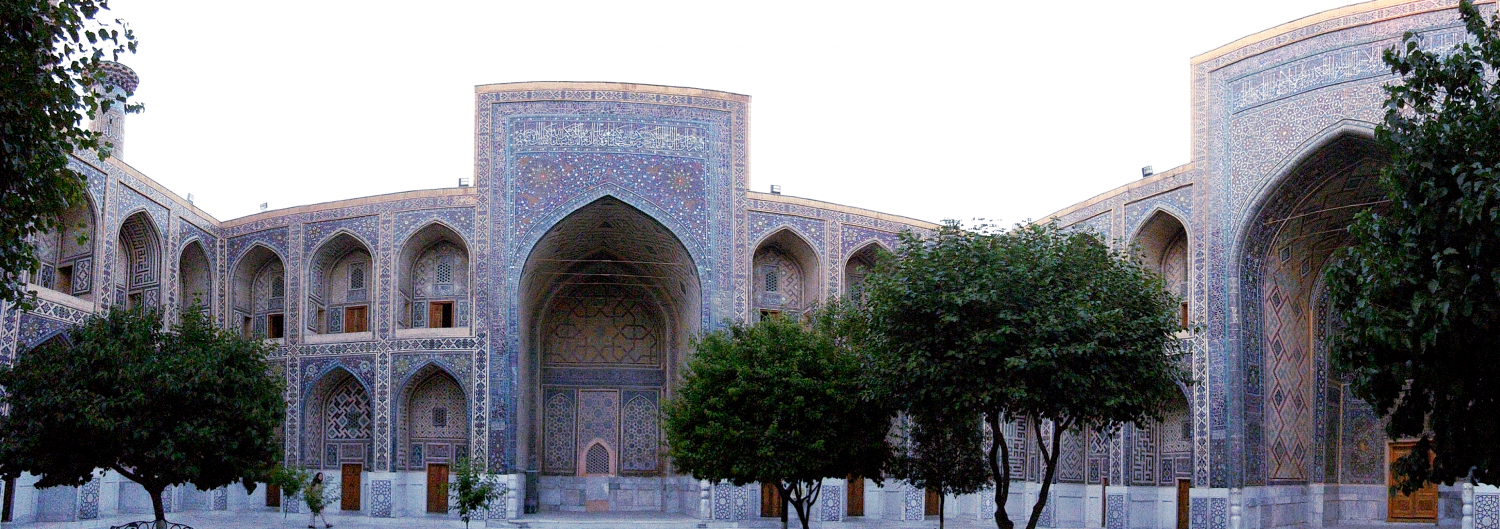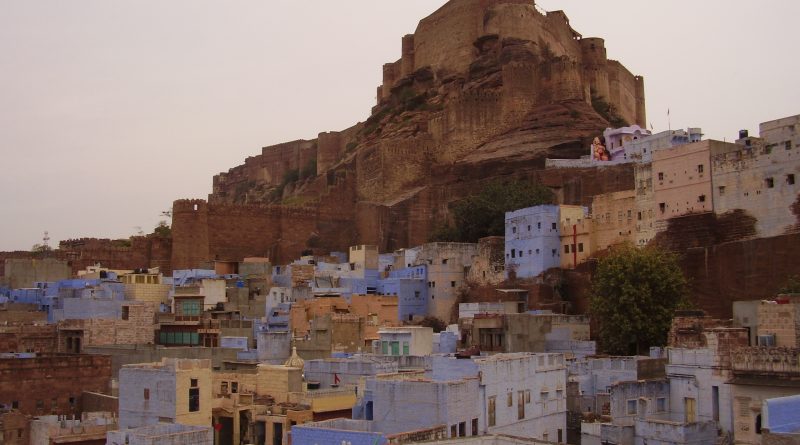The Mehrangarh Fort in Jodhpur
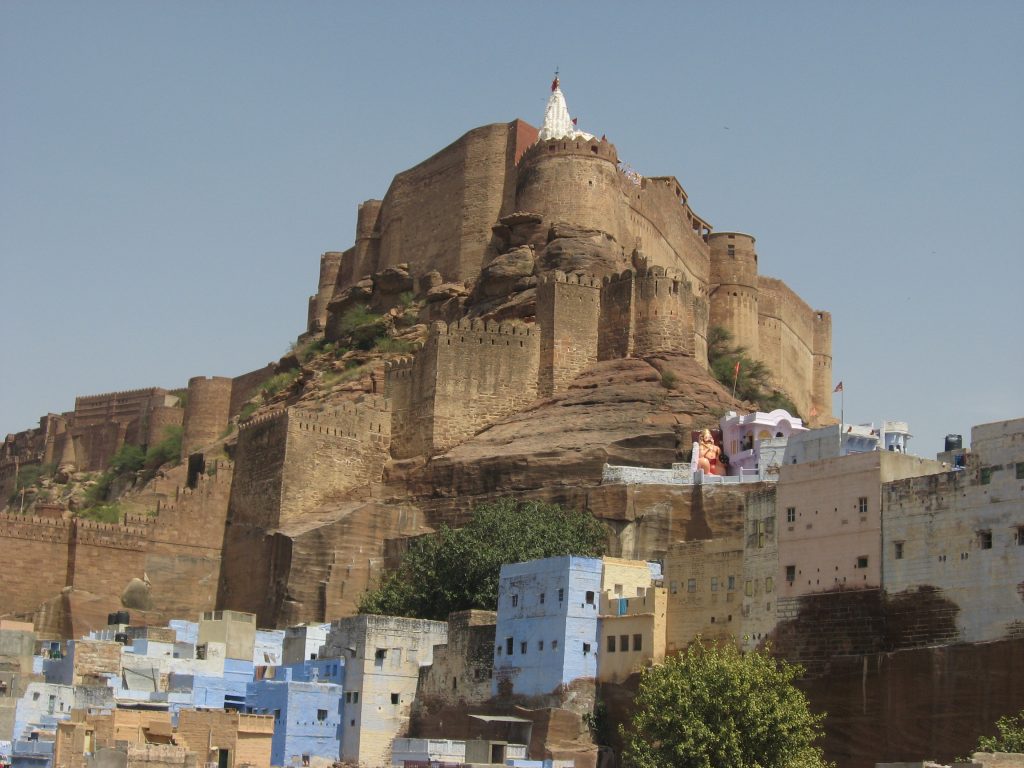
History about the The Mehrangarh Fort
The Mehrangarh Fort (“The Sun’s Fort”) dominates from the top of the hill, 400-meter high, called Bakurcheeria; its walls extend for about five kilometers, for a maximum of 36 meters in height. Kipling describes it as follows: “A palace that might have been built by the Titans and colored by the morning sun.” The Fort was built by the order of the Rathore dynasty ‘s ruler, Rao Jodha, who moved the capital here from Mandore in 1459.
Legend says that at the top of the hill lived a hermit called Cheeria Natji, who had categorically refused to move to allow the start of costruction. Rao Jodha then used strong ways to get rid of the saint, loved by the local population; in response, the hermit cursed the king, wishing the drought in his country.
Struck by the curse, Rao Jhoda had ordered to build a temple and a house for Natji inside the fort; not only that, he sentenced a man called Rajiya Bambi to be buried alive in the foundation for good luck. In return the king promised to protect his family for all generations to come; it is said that even today the local marajà looks after the heirs of Rajiya. Despite this, the city still suffers from drought every 3 or 4 years!
Inside the Sunny Fort
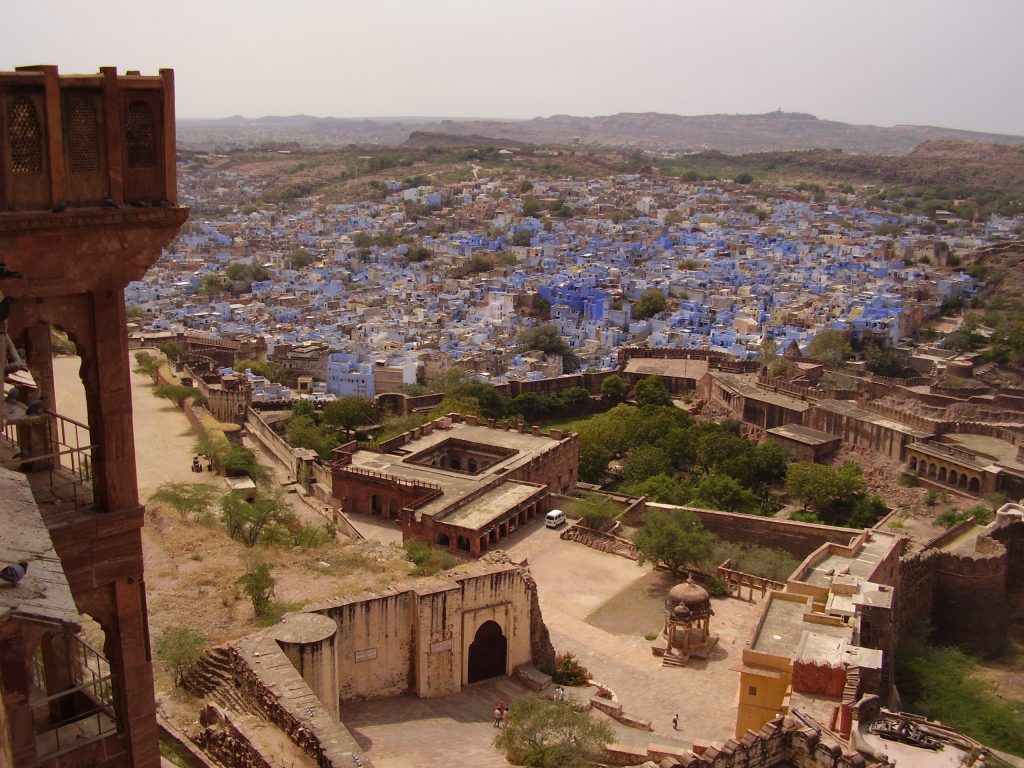
As first impression, the Fort is compact and powerful; the gray walls soar from the top of the summit. A group of musicians with orange turbans welcome visitors with melodies produced by the same fifes used to enchant snakes and tabla.
We go through the first vast portal, Jai Pol; the Fort counts seven; the most famous are Fateh Pol, Dedh Kamgra Pol and Loha Pol. From last I’m more impressed, not only because it leads to the various buildings built in various eras up to the last century, but above all for the handprints that I find marked at the top on the right. Listening to the guide I discover that they are those of the sati, the 31 brides who were burned alive in 1843 on the pyre of their husband Maharaja Man Singh, it is said, voluntarily.

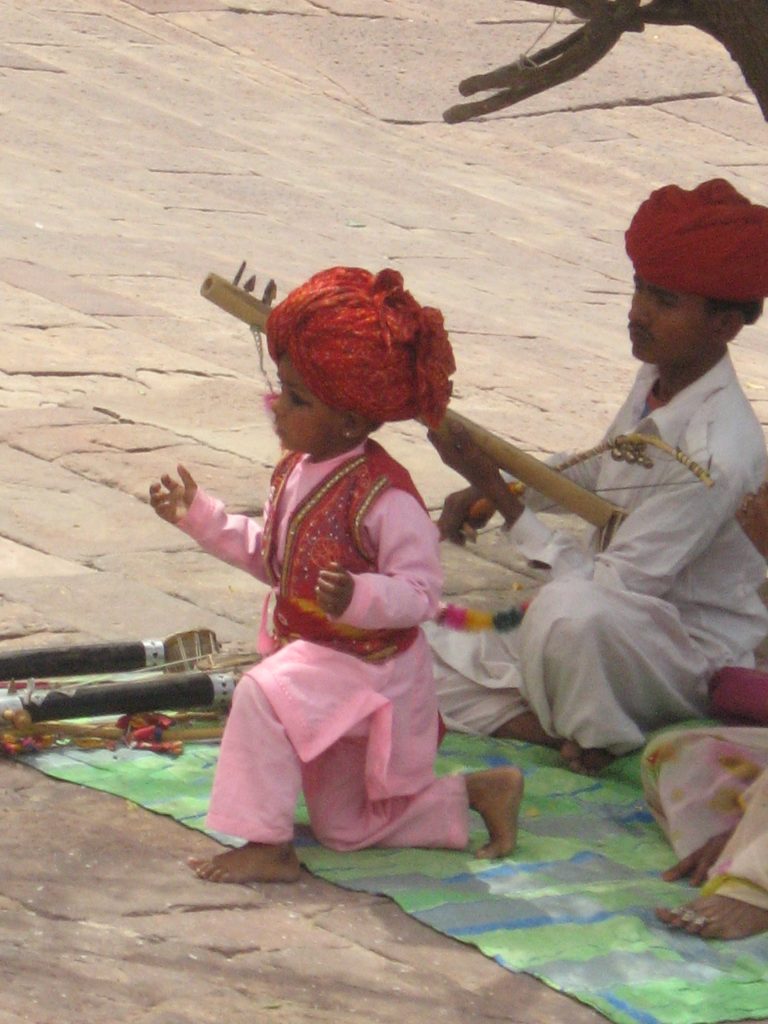
With the skin shaken by the shivers I climb admiring the balconies of the tall palaces closed by fine grids inlaid with splendid floral decorations. The major additional buildings were ordered by Maharaja Ajit Singh in the 17th century. We enter to visit the various rooms of the Palaces of the Pearls, of the Mirrors and of the Flowers; immense spaces decorated with precious colored carvings, floral and geometric mosaics, games of mirrors and lights. I smile in front of a room dedicated to the celebration of Christmas, with a thousand colored balls in tow.
Inside there is also a Museum which includes rooms dedicated to ancient manuscripts, traditional paintings with various deities and an armory.
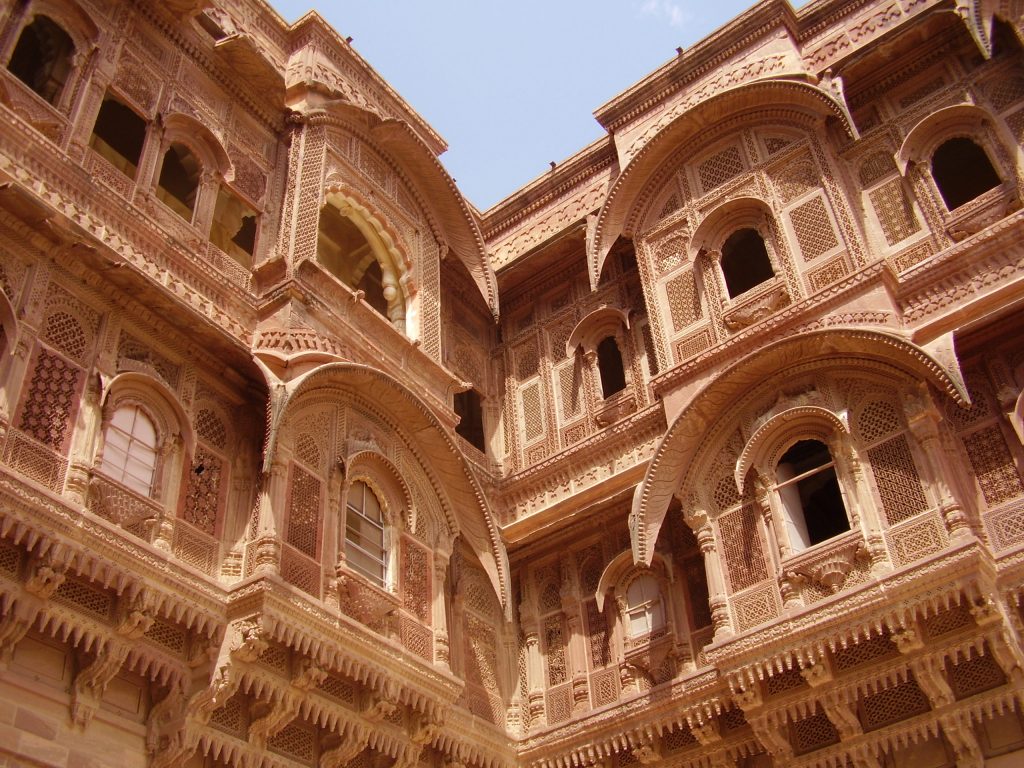
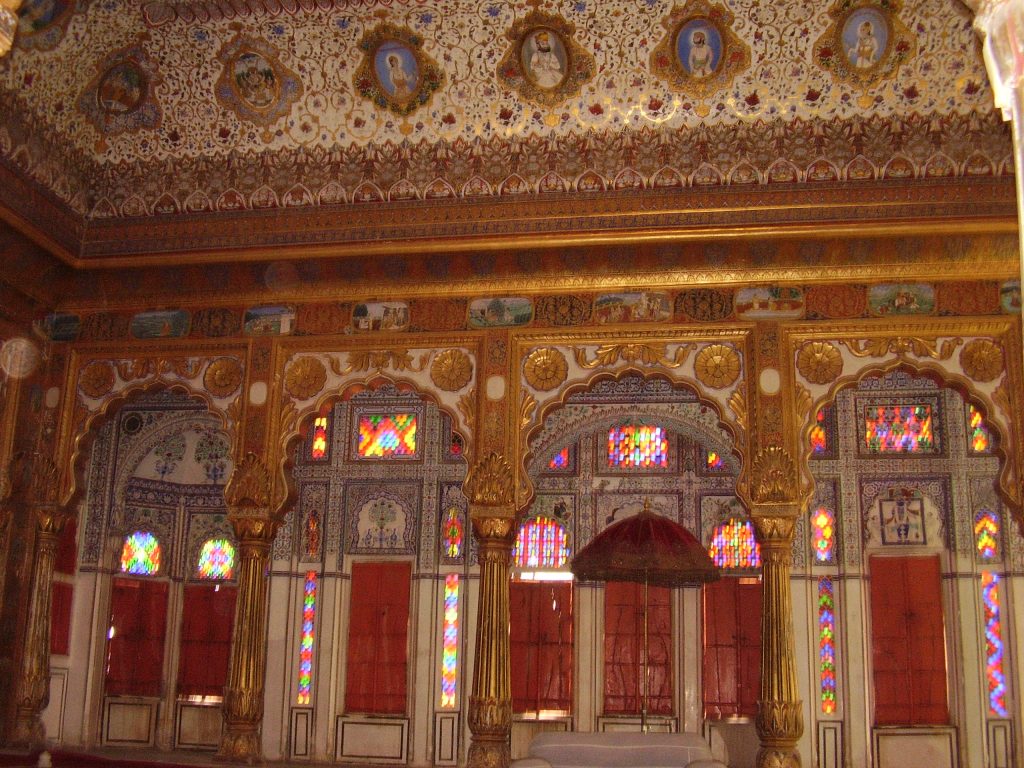
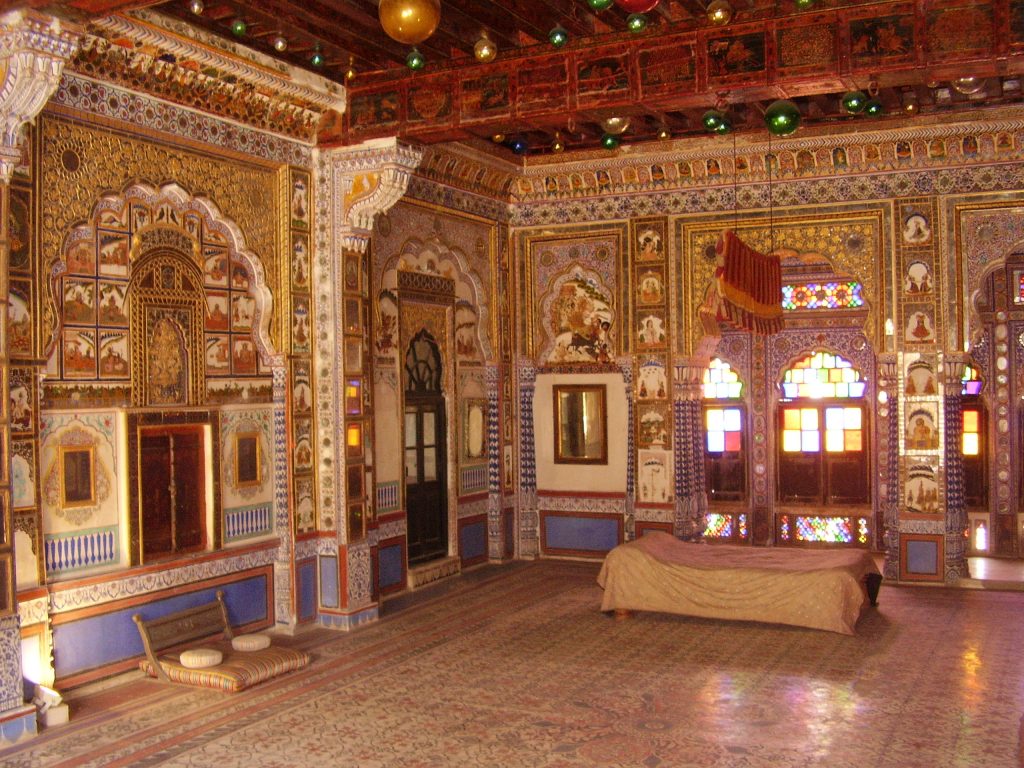
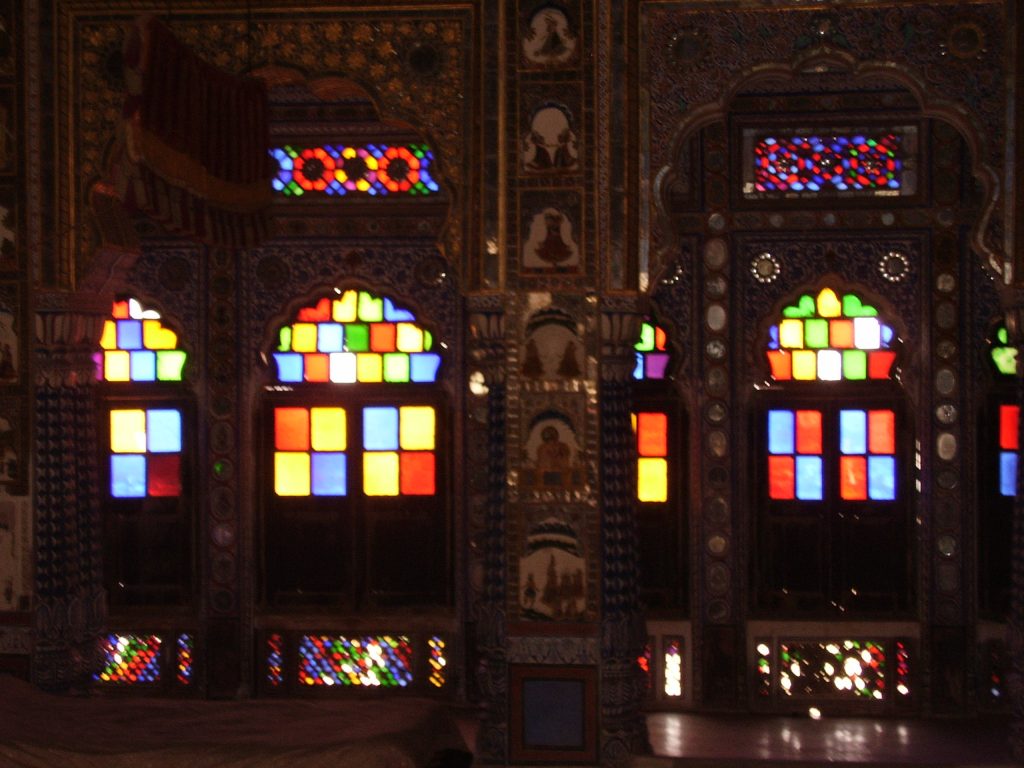
Ending in beauty…
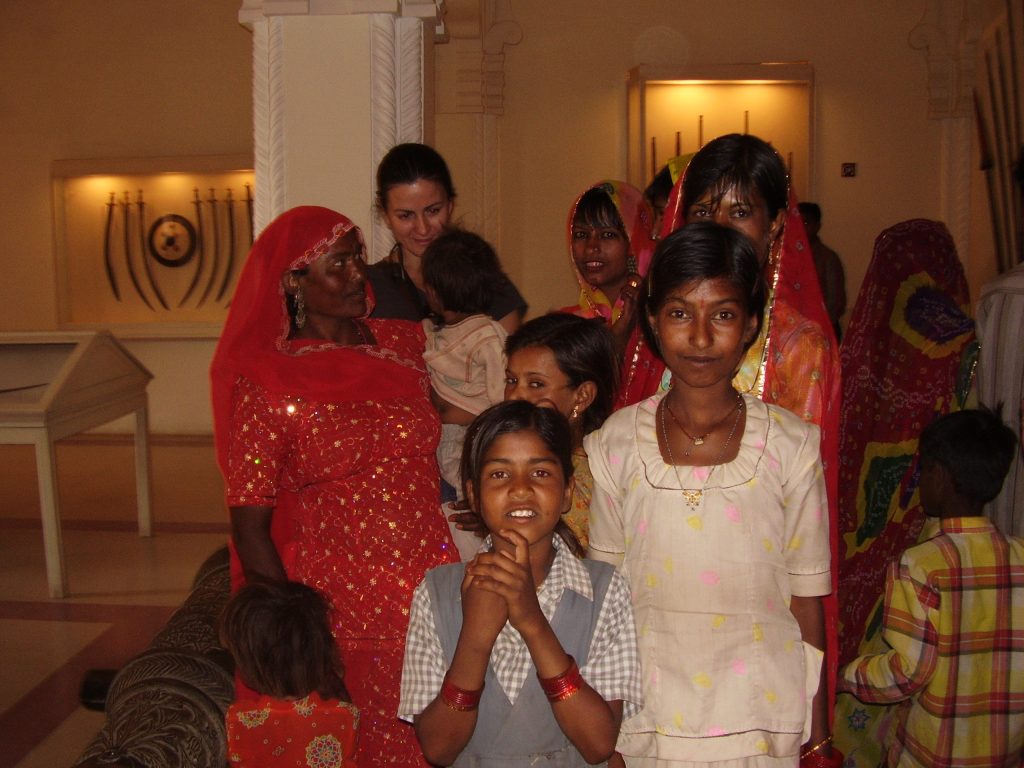
Sated with stories and beauty, we admire from above the blue city with its tiny houses scattered in the narrow valley. The Fort is crowed with splendid girls wrapped in their bright sari; they walk with their faces completely covered, but if their intention is to go unnoticed, the dozens of jewels in their arms and ankles cause the opposite effect.
We note many people heading towards the opposite side of the Palaces, so we decide to follow the flow and we find ourselves in the small and white semi-open temple with a spherical plant, Chamunda Mataji, dedicated to the goddess Devi, the favorite of the Rathores.
Some celebrations are in progress; many Indians offer flowers and fruit to the altar of the deity; unexpectedly I am stopped by a television journalist who throws the microphone in front of my face and he asks me: “Good morning, did you convert to Hinduism? Did you come here to celebrate (the name of the forgotten holiday)?”
I answer him somewhat rudely: “Excuse me, I am not a Hindu, but a simple tourist; I have no idea what you’re talking about. Goodbye.” The journalist looks at me sideways and I reach my friends who are sniggering. My friend Cecilia approaches a group of women sitting on the ground while they play loud rattles. One of them invites us to sit with them handing us a pair of the instrument.
We accompany them for a few minutes, letting ourselves be lulled by the silvery sound of their voices; last symphony of the sunny Fort of Mehrangarh.
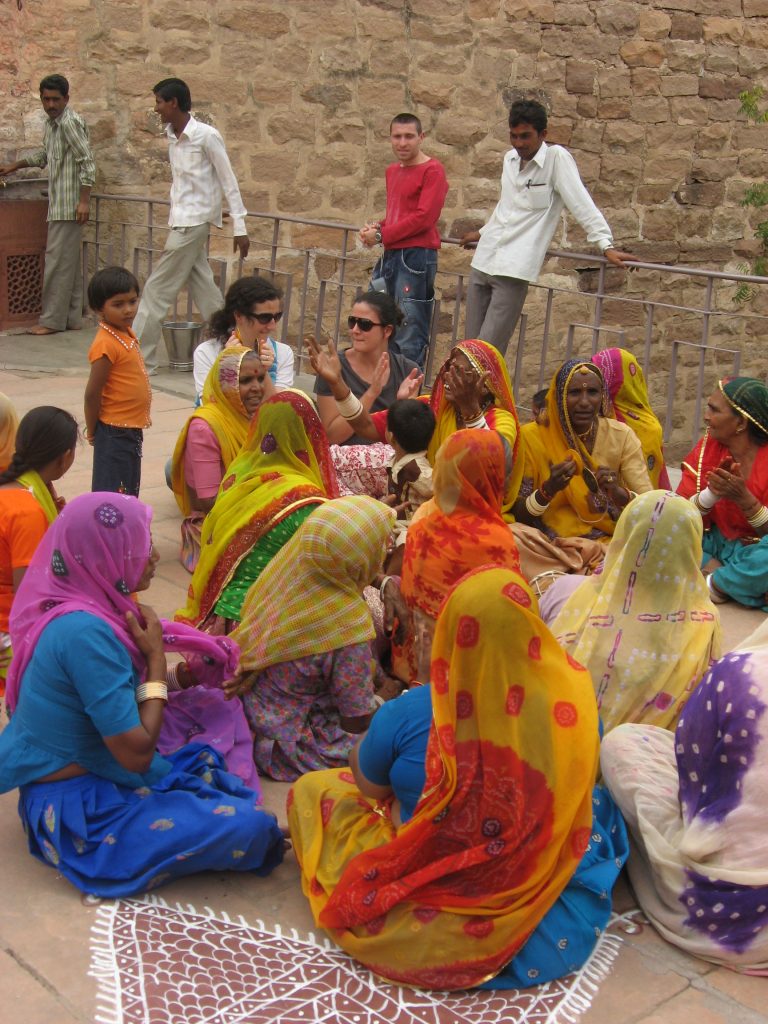
For information of Amber Fort, click here.
